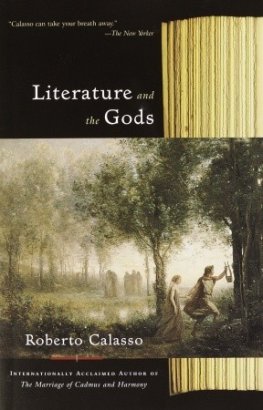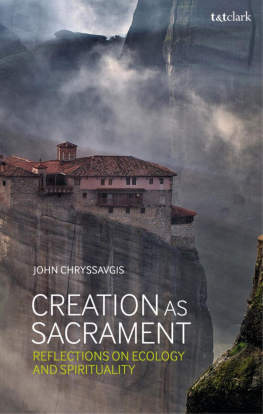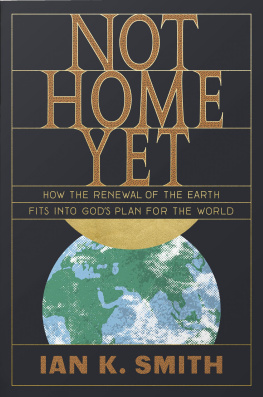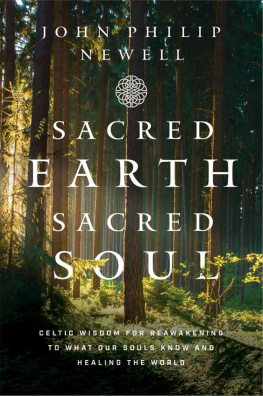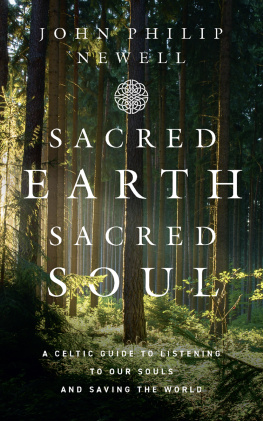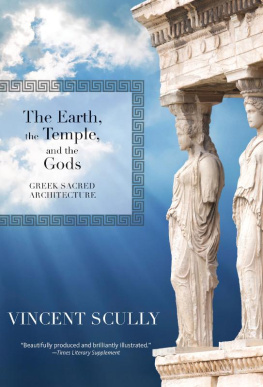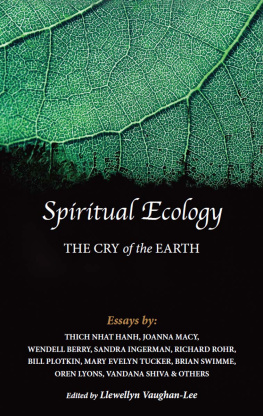Praise for
Walking in the Land of Many Gods
With compassion and loveemeeih eh ahmoooh nhiyah in the Acoma Pueblo languagewe are within sacred reason when we sincerely and fully participate in the ecology of life, i.e., the organic forces of nature, Wohlpart observes in Walking in the Land of Many Gods. And he confirms and affirms this teaching by the questioning yet insightful articulation offered by Linda Hogan, Terry Tempest Williams, and Janisse Ray to help us realize it is possible to attain beneficial communion with sacred Mother Earth. And with some help from Martin Heidegger also. Thank youDawaa-ehfor the knowledge!
SIMON J. ORTIZ, Acoma Pueblo author of
Woven Stone, Out There Somewhere, from Sand Creek
A. James Wohlpart has given us a lucid, large-spirited study of environmental literature that contributes directly to a central issue in contemporary ecocriticism: how to understand humanitys fundamental connectedness to the world. Wohlpart embraces this conundrum with eloquence, optimism, and an enthusiastic sense of mystery. His emphasis on spirituality and sacred reason is a particularly valuable addition to the current conversation about ecomaterialism.
SCOTT SLOVIC, University of Idaho, editor of
ISLE: Interdisciplinary Studies in Literature and Environment
A. James Wohlpart both carries out highly perceptive readings of Janisse Ray, Terry Tempest Williams, and Linda Hogan and makes his own valuable contributions to the broader project that their books serve. Central to his discussion is the importance of sacred reason, which he defines as an ecological model for relationship and healing. Just as this concept reinforces the ceremonial intentions of the authors on whom he focuses, so too does it help him explain how both caring for the land and writing can offer ways to re/place ourselves in the intricacy and wholeness of this world.
JOHN ELDER, Imagining the Earth
An innovative ecocritical study, Walking in the Land of Many Gods makes a real contribution to our understanding of contemporary environmental literature and to our current environmental situation. Wohlpart articulates an alternative view of the human place in the world, suggesting ways we can live richer and more ecologically sustainable lives.
PHILIP CAFARO, Thoreaus Living Ethics:
Walden and the Pursuit of Virtue
Walking in the Land of Many Gods

Walking in the Land of Many Gods
REMEMBERING SACRED REASON
IN CONTEMPORARY
ENVIRONMENTAL LITERATURE
A. JAMES WOHLPART

2013 by the University of Georgia Press
Athens, Georgia 30602
www.ugapress.org
All rights reserved
Designed by Kaelin Chappell Broaddus
Set in by 10/13 Dante MT Std.
Manufactured by Thomson-Shore, Inc.
The paper in this book meets the guidelines for
permanence and durability of the Committee on
Production Guidelines for Book Longevity of the
Council on Library Resources.
Printed in the United States of America
13 14 15 16 17 P 5 4 3 2 1
Library of Congress Cataloging-in-Publication Data
Wohlpart, A. James, 1964
Walking in the land of many gods : remembering sacred reason in
contemporary environmental literature / A. James Wohlpart.
pages cm
Includes bibliographical references.
ISBN 978-0-8203-4523-9 (hardcover : alk. paper)
ISBN 0-8203-4523-7 (hardcover : alk. paper)
ISBN 978-0-8203-4524-6 (pbk. : alk. paper) ISBN 0-8203-4524-5 (pbk. : alk. paper)
1. American literatureHistory and criticism. 2. Environmental literature
History and criticism. 3. Ecocriticism. 4. Nature in literature in literature.
5. Human ecology in literature. 6. Ecology in literature. I. Title.
PS169.E25. W64 2013
810.9355dc23
2012043942
British Library Cataloging-in-Publication Data available
ISBN for digital edition: 978-0-8203-4587-1
This book is dedicated
to my father,
my elder, my friend, and my hiking partner,
who introduced me to all my relations.
CONTENTS
CHAPTER ONE
Introduction
A Mind of Sky and Thunder and Sun
CHAPTER TWO
Remembering Deep Space and Deep Time
Heidegger, the Pleistocene, and Native American Philosophy
CHAPTER THREE
Restor(y)ing the Self
Ecological Restoration in Janisse Rays Ecology of a Cracker Childhood
CHAPTER FOUR
The Long Migration Home
Listening to Birds in Terry Tempest Williamss Refuge: An Unnatural History of Family and Place
CHAPTER FIVE
Healing the Severed Trust
Linda Hogans Dwellings: A Spiritual History of the Living World as Native Ceremony
CHAPTER SIX
Walking in the Land of Many Gods
Remembering the Mysterious Plenitude of Earth
PREFACE
The founding premise of Walking in the Land of Many Gods is that a creative force animates the universea force that became manifest in the Big Bang nearly 14 billion years ago and that led to the formation of Earth 4.5 billion years ago, which in turn fostered a life-sustaining system, call it Gaia or what you willand that humans, like all animate and less-than-animate beings, have the potential to participate in this creative force.
Our participation as a species might perhaps differ from that of other species in that ours includes a self-consciousness that allows us the opportunity to reflect on our connection to and participation with, or, alternatively, our separation from and reaction against, this creative energy. Central to the human ability to participate in or separate from this flow and exchange of creative energy is the role of language, which originally derived its force from our sensuous participation with the world around us but which now acts as an endless game of tag.
The poststructuralists seem to have it right. Language is now too often an endless play of signification, cut off from the reality of what it purports to signify. We have become, at the beginning of the twenty-first century, trapped in our own mental machinations seemingly without a way out. This entrapment is the logical conclusion of a separation from the natural world that began ten thousand years ago on the floodplains of Egypt and Sumer, heightened with the advance of a historical mind-set and the scientific revolution, and fully closed around us with the rise and domination of the techno-industrial-urban world.
But, I would contend, there is another way. Walking in the Land of Many Gods is my attempt to point in this direction. What I hope to show is that we can remember an ancient wisdom of Earth and elders that reconnects us, bodily, sensuously, spiritually to the world that sustains us and nurtures us and that is the very foundationin an evolutionary and biological sense but also in an emotional, psychological, and spiritual senseof our being.
The central question becomes, then, about our place in this world. I want to ask, can we re/place ourselves bodily, emotionally, intuitively in the natural world in such a way that we reopen the channels through which the creative energy of the universe flows, so that we become once again participants in the ongoing dialogue between all species, indeed participants in the omnipresent conversation that occurs within the totality of the natural world including the plants and the animals, the mountains and the valleys, the rivers and the streams, the sky, the thunder, and the sun? Can we reanimate our own words, both spoken and written, so that they participate in this creative energy and become, rather than the means of our disconnection from the world, a way of reengaging the flow of energy that invisibly surrounds us? Finally, can we remember an ancient way of thinking and being in the world that heals our bodies and our spirits and that assists us in returning to our rightful place in our communities, human and nonhuman, allowing us to heal the rift between ourselves and nature?
Next page

